The Supermicro X11SPA-T Review: An Impressive Cascade Lake Workstation Motherboard
by Gavin Bonshor on January 24, 2020 9:00 AM ESTVisual Inspection
The Supermicro X11SPA-T is an E-ATX motherboard designed for workstations and is compatible with Intel's Xeon Scalable and Xeon W-3200 series processors. Deviating slightly from the design of conventional prosumer models, the X11SPA-T has a black PCB, with black heatsinks, and black and blue memory slots. The large single LGA3647 socket and twelve memory slots dominate the majority of the top side, while the seven full-length PCIe 3.0 slots dominate the lower portion.
With its large E-ATX frame, there's a lot of key controllers which provides both servers, and workstation functionality for users. There are twelve memory slots which are separated into two banks, which are located on either side of the large LGA3647 socket. The twelve slots support up to DDR4-2933 ECC RDIMM and LRDIMM memory with capacities of up to 2 TB, and there's also support for Intel's DCPMM with processors that provide support.
In the bottom left-hand corner is seven full-length PCIe 3.0 slots which operate in two main configurations; x16/x0/x16/x0/x16/x0/x16 or x16/x8/x8/x8/x8/x8/x8. Each full-length slot is reinforced with metal armor.
For storage, the Supermicro X11SPA-T has four PCIe 3.0 x4 M.2 slots with each supplied with its own integrated heatsink. Each slot is vertically placed on the board with one located to the right of the full-length PCIe slots, two further over to the right of the chipset heatsink, and one located above these next to the memory slots. Each slot can accommodate M.2 2242/2260/2280, and 22110 drives. The X11SPA-T M.2 slots do support Intel VROC with RAID 0, and 1 support, but a VROC key is required. Also present are eight SATA ports with support for RAID 0, 1, 5, and 10 arrays.
A total of ten 4-pin headers are present with two dedicated for a CPU fan, and eight for chassis fans. The 4-pin headers are all located in the top half of the board with four to the left-hand side of the memory slots, three along the top, and three on the right-hand side below the 24-pin ATX motherboard power input. The power delivery is a simple 6-phase array, with a small, but ample black aluminium finned heatsink.
The Supermicro X11SPA-T is using one of the most popular BMC controllers via the ASPEED AST2500. The ASPEED 2500 provides graphics via its BMC functionality and offers GUI access from a D-sub video output located on the rear panel. Assisting the ASPEED 2500 is a Realtek RTL8211E Ethernet controller which is dedicated to the IPMI and offers users remote access to the X11SPA-T.
On the rear panel is three RJ45 networking ports, each driven by its own individual Ethernet controller. These consist of an Aquantia AQC107 10 G, an Intel I120-AT Gigabit, and a Realtek RTL8211E PHY for the IPMI. In terms of USB connectors. there are four USB 3.1 G1 Type-A, one USB 3.1 G2 Type-A, and one USB 3.1 G2 Type-C port. A Realtek ALC888 HD audio codec powers five 3.5 mm audio jacks and S/PDIF optical output, with a COM1, and VGA port which links up to the ASPEED 2500 BMC controller.
What's in The Box
Included in the accessories bundle are six SATA cables, an IO shield, a CPU to GPU power adapter, and a quick reference quick start guide. It should be noted that this is the retail package bundle, where the bulk list comes with just two SATA cables.


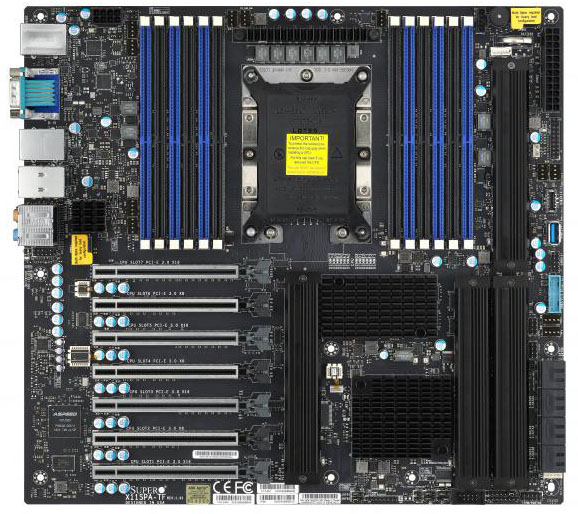
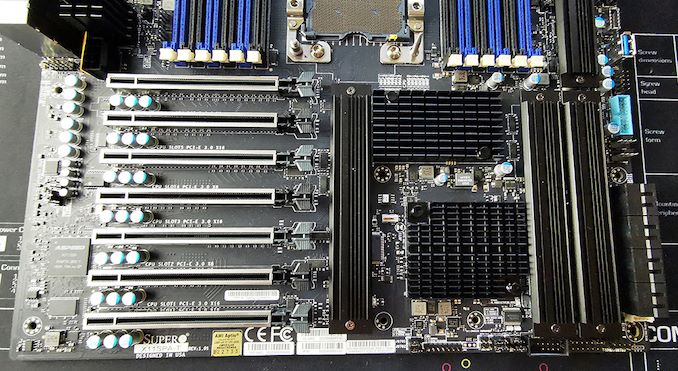
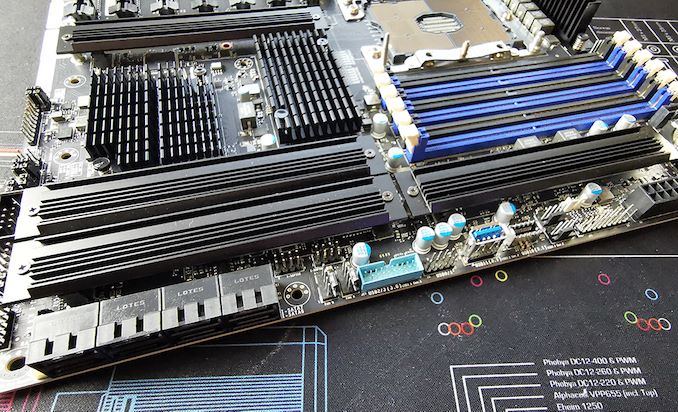

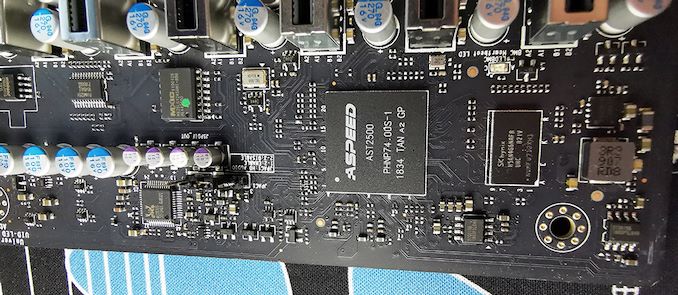
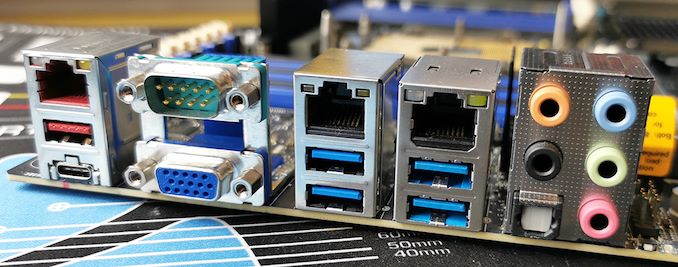
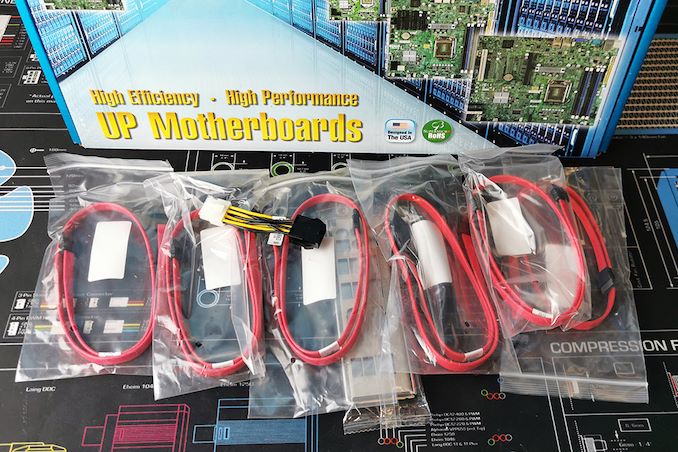








31 Comments
View All Comments
Pneumothorax - Friday, January 24, 2020 - link
I'm sure the profit margin on these is quite a bit less then ridiculously overpriced Z390 & X570 boards named after some deity...Operandi - Friday, January 24, 2020 - link
True for some of them for sure but a lot of the consumer boards that are aimed at the high-end overclocking are the real deal in terms of engineering. Very powerful and efficient VRMs are not cheap and a lot more overbuilt than on something like in this board so the margins are probably not as crazy high as you think (at least in the middle of the Z390 X570 market).airdrifting - Sunday, January 26, 2020 - link
What overclocking are you talking about? Overclocking a 9900K from 4.7GHz stock all core turbo to 5.0GHz and look at 95C loaded temperature, or overclocking Ryzen 0.1GHz past the precision boost? You kids don't know anything about overclocking nowadays.Ironchef3500 - Monday, January 27, 2020 - link
+1brucethemoose - Monday, January 27, 2020 - link
+1There is *a little* headroom in HEDT CPUs, for now...
web2dot0 - Tuesday, February 11, 2020 - link
Still remember those Celeron 300A days OC to 450MhzThe glory days of Overclocking ...
Operandi - Friday, January 24, 2020 - link
I will say the marketing sucks though. I don't give a fuck about an Aorus regardless of how extreme it may be and I really don't want to join a republic, thanks for asking though.GreenReaper - Sunday, January 26, 2020 - link
They're not exactly *asking* - the red-cloaked tide of Gamers have annexed several nearby states. For a while it looked like they'd take the Ministry of Sound, but fortunately Realtek pushed them back.Operandi - Friday, January 24, 2020 - link
Also, these comments are in reverse order cause there isn't a edit button. Oh well.....rahvin - Friday, January 24, 2020 - link
The 570 boards are expensive because they are the first PCIE4 motherboards. That and they needed a 12 layer board to get the pcie trace lengths within the spec limits. As the OEM's get more experience with 4.0 they'll drop in price but the first boards are always going be $$$ because of the additional engineering. You might not remember but the first 3.0 boards were more expensive too.